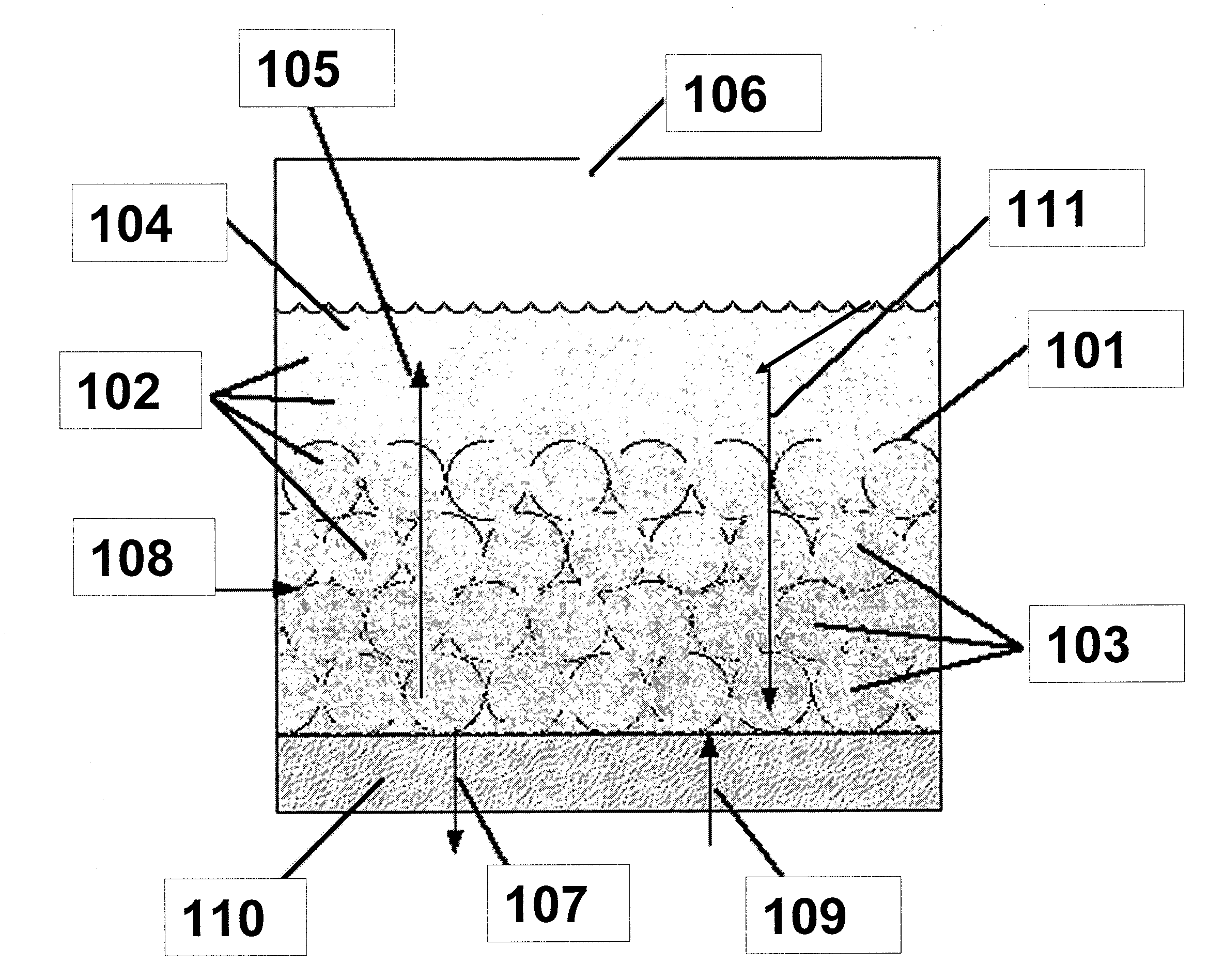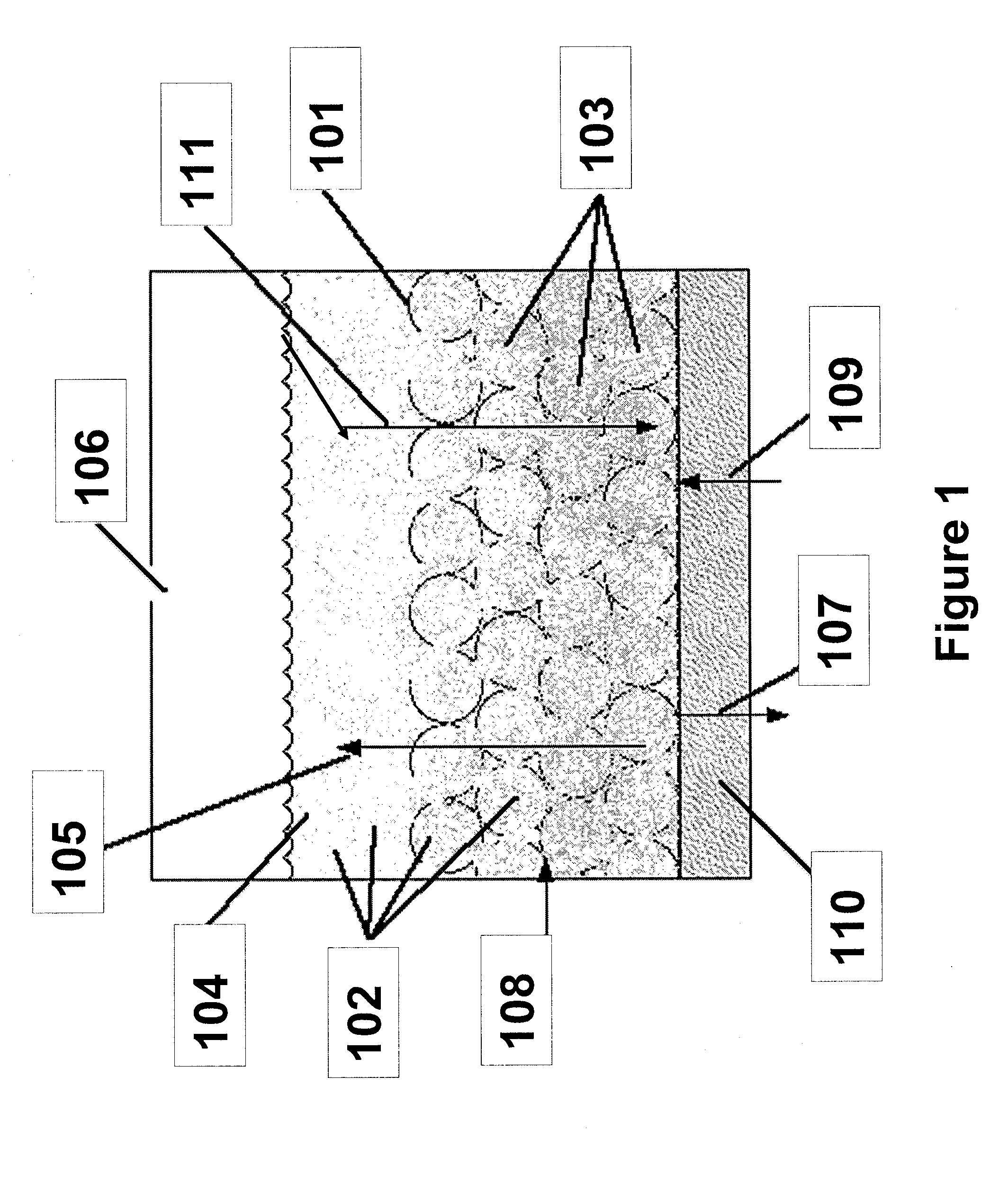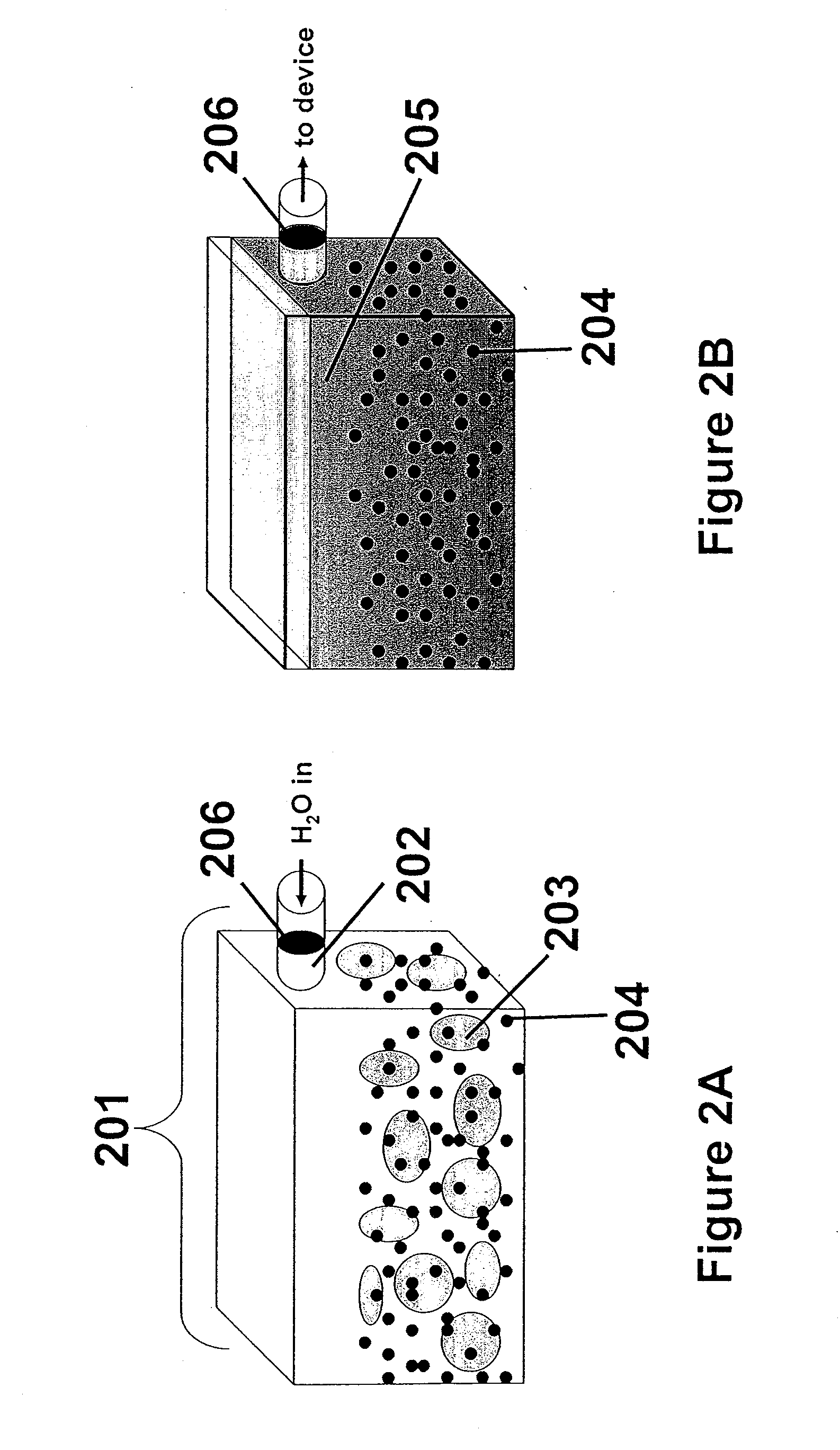Electro-catalytic recharging composition
- Summary
- Abstract
- Description
- Claims
- Application Information
AI Technical Summary
Benefits of technology
Problems solved by technology
Method used
Image
Examples
Embodiment Construction
[0021]In an electrochemical device employing a fluidized bed, a significant portion of the electrode may comprise catalytic metal particles dispersed in an ion-conducting solution, also known as an electro-catalytic charging composition. Because a significant portion of the electrode is fluidized, the electrochemical cell can be configured to operate horizontally, vertically, or any degree in between. Additionally, the electro-catalytic charging composition may be employed in a variety of cell designs, including, but not limited to flat plate or tubular structures.
[0022]Referring to FIG. 1, the inventions described herein may be used in an electrochemical device, a portion of which is shown with a high surface area metallic surface infused with electro-catalytic solution. In this example, the inventive composition is used in a water electrolysis device. Metallic surface 101 is preferably highly reticulate or porous, and can accommodate the infusion of nanoparticles 102 (shown as dot...
PUM
 Login to View More
Login to View More Abstract
Description
Claims
Application Information
 Login to View More
Login to View More - R&D
- Intellectual Property
- Life Sciences
- Materials
- Tech Scout
- Unparalleled Data Quality
- Higher Quality Content
- 60% Fewer Hallucinations
Browse by: Latest US Patents, China's latest patents, Technical Efficacy Thesaurus, Application Domain, Technology Topic, Popular Technical Reports.
© 2025 PatSnap. All rights reserved.Legal|Privacy policy|Modern Slavery Act Transparency Statement|Sitemap|About US| Contact US: help@patsnap.com



